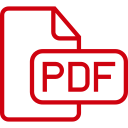
ad here
666 Download
1 year ago
Interstitial Cystitis (IC), a chronic bladder condition, can significantly impact a person’s quality of life. Managing symptoms often involves a multifaceted approach, and one crucial aspect is diet. The Interstitial Cystitis Diet is a strategic eating plan designed to alleviate symptoms and improve the overall well-being of those living with IC. In this comprehensive guide, we’ll explore the foundations of the Interstitial Cystitis Diet, understand its principles, and provide practical tips for incorporating it into daily life.
Overview of Interstitial Cystitis
Interstitial Cystitis is a chronic condition characterized by inflammation of the bladder wall, leading to symptoms such as pelvic pain, urinary urgency, and frequency. The exact cause of IC is not well-understood, and treatments often focus on symptom management and lifestyle modifications.
Role of Diet in Interstitial Cystitis
Dietary choices can significantly impact the severity of IC symptoms. Certain foods and beverages may trigger or exacerbate inflammation, leading to discomfort and pain. The Interstitial Cystitis Diet aims to identify and eliminate potential triggers, providing relief to individuals managing this challenging condition.
1. Identification of Trigger Foods
The foundation of the Interstitial Cystitis Diet lies in identifying and avoiding foods that may trigger symptoms. Common triggers include:
2. Alkaline and Bladder-Friendly Foods
To counteract acidic triggers, the Interstitial Cystitis Diet encourages the inclusion of alkaline and bladder-friendly foods, such as:
3. Hydration
Adequate hydration is essential for individuals with IC. Water helps flush out toxins and irritants from the bladder. While plain water is optimal, some people find relief by adding a splash of non-citrus fruit juice or infusing water with cucumber or mint for added flavor.
4. Meal Timing and Portion Control
Managing portion sizes and spreading meals throughout the day can help prevent overloading the bladder, reducing the frequency of urination and potential discomfort. Eating smaller, more frequent meals may be beneficial for some individuals with IC.
1. Keep a Food Diary
Maintaining a detailed food diary can be instrumental in identifying trigger foods and patterns. Record everything you eat and drink, along with any symptoms experienced. This information can help pinpoint specific dietary culprits and guide modifications.
2. Gradual Elimination
Instead of making drastic changes, consider a gradual elimination approach. Remove one potential trigger at a time and observe how your body responds. This method allows for a more accurate identification of problematic foods.
3. Experiment with Alternative Ingredients
Explore alternative ingredients that align with the Interstitial Cystitis Diet. For example, replace acidic tomato-based sauces with a creamy Alfredo sauce made with non-acidic ingredients. Experimenting with new recipes can make the dietary adjustments more enjoyable.
4. Seek Professional Guidance
Consulting with a healthcare professional, such as a registered dietitian or nutritionist, can provide personalized guidance. A professional can help create a balanced and satisfying meal plan while ensuring nutritional needs are met.
5. Mindful Eating
Practicing mindful eating involves paying attention to hunger cues, savoring each bite, and being aware of how different foods affect your body. Mindful eating can contribute to better digestion and an enhanced understanding of your body’s responses to various foods.
Individual Variability
It’s essential to recognize that individuals with IC may respond differently to specific foods. What triggers symptoms for one person may not affect another. The Interstitial Cystitis Diet is not one-size-fits-all, and a personalized approach is crucial.
Nutritional Adequacy
Eliminating certain foods from the diet can pose challenges in terms of nutritional adequacy. Ensuring that the diet remains well-balanced and provides essential nutrients is paramount. A healthcare professional can offer guidance on appropriate supplements if needed.
Psychosocial Impact
Living with dietary restrictions can have psychosocial implications. It’s essential to address the emotional aspects of dietary changes and seek support from healthcare professionals or support groups if needed.
The Interstitial Cystitis Diet serves as a valuable tool for managing symptoms and enhancing the overall well-being of individuals with IC. By identifying and avoiding trigger foods while incorporating bladder-friendly options, individuals can take an active role in mitigating the impact of this chronic condition on their daily lives.
Read More: Low Cholesterol Diet PDF
As with any dietary modification, it’s crucial to approach the Interstitial Cystitis Diet with a sense of exploration and patience. Understanding how specific foods interact with your body and making informed choices can empower you to navigate life with greater comfort and resilience.
In the pursuit of nurturing well-being, the Interstitial Cystitis Diet stands as a supportive guide, offering individuals with IC the opportunity to make dietary choices that contribute to a more balanced and vibrant life.
| PDF Name: | Interstitial-Cystitis-Diet |
| Author : | LatestPDF |
| File Size : | 162 kB |
| PDF View : | 47 Total |
| Downloads : | 📥 Free Downloads |
| Details : | Free PDF for Best High Quality Interstitial-Cystitis-Diet to Personalize Your Phone. |
| File Info: | This Page PDF Free Download, View, Read Online And Download / Print This File File At PDFSeva.com |
Copyright/DMCA: We DO NOT own any copyrights of this PDF File. This Interstitial Cystitis Diet PDF Free Download was either uploaded by our users @LatestPDF or it must be readily available on various places on public domains and in fair use format. as FREE download. Use For education proposal. If you want this Interstitial Cystitis Diet to be removed or if it is copyright infringement, do drop us an email at [email protected] and this will be taken down within 24 hours!
© PDFSeva.com : Official PDF Site : All rights reserved
